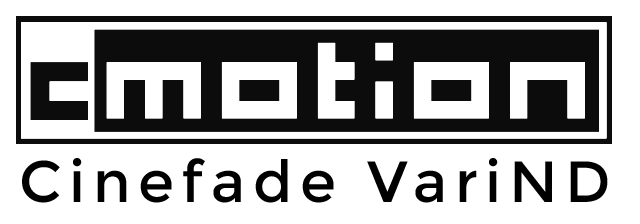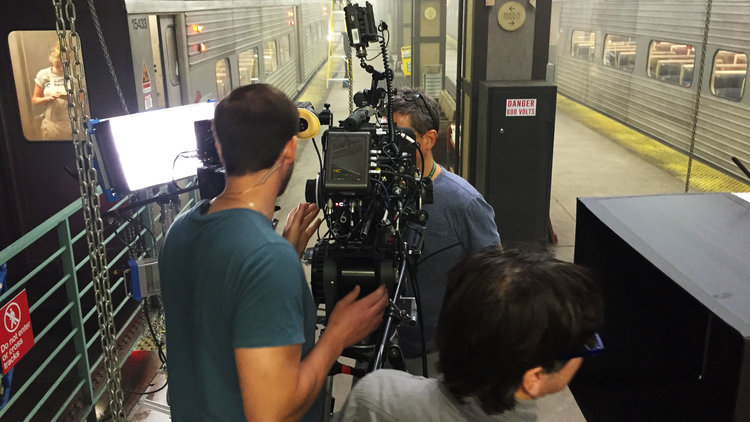Paul Cameron ASC uses Cinefade to vary depth of field in 'The Commuter'
The novel camera accessory Cinefade was used to gradually transition from a deep to a shallow depth-of-field in one shot at a pivotal moment in The Commuter (2018), directed by Jaume Collet-Serra.
Liam Neeson's character Michael MacCauley is fired from his job as an insurance salesman. To accentuate this dramatic moment in the story, the background slowly becomes blurry, forcing viewers to focus their attention on Michael as his state-of-mind shifts and the gravity of the situation hits him full force.
In combination with the sound fading out and an ominous score, it becomes very clear that this is a pivotal moment in the story.
HOW TO BLUR THE BACKGROUND IN ONE SHOT WITH CINEFADE
Cinefade is a camera accessory, which allows cinematographers to vary depth-of-field in film. Gradually transitioning between a deep and a shallow depth-of-field is a novel in-camera effect, which has so far not been used with digital cameras.
Cinefade uses a cmotion cPRO lens control system to vary iris diameter, changing depth-of-field and blurring or sharpening the background. A ND filter is slaved to the iris, which varies its light transmission in sync with the iris to maintain a constant exposure throughout. The system works on any digital or film camera and cine-lens, is quick to setup and easily controlled from a hand unit.
For more information and to find out how to rent a Cinefade system, visit www.cinefade.com.
ON SET WITH PAUL CAMERON ASC
DP Paul Cameron ASC is known to be an innovative Director of Photography and is always looking to push the boundaries of cinematography.
He was researching into building his own rig to vary depth-of-field in one shot when his 1AC Dave Cozens heard about a novel camera accessory that achieves this effect from a Technician at Arri Rental London.
After two test days at Pinewood Studios in London with his 1AC as well as DIT Tom Gough, Paul decided that Cinefade was the best way forward for the shots he had in mind.
“Director Jaume Collet-Serra and I wanted a severe depth-of-field shift to accentuate Liam Neeson’s experience - something to isolate him from his surrounding world. I was in the process of designing a system when my A-camera first AC, Dave Cozens, came upon Cinefade. It was exactly what we were looking for.”
Shooting on Arri Alexa Mini cameras, Paul decided to use a 29mm Leica Summilux T1.4 lens for the Cinefade shot instead of the uncoated Arri Zeiss Master Primes he was shooting the rest of the film with. The Leica lenses suffer from less optical shading, a phenomenon which is apparent with many fast wide prime lenses and looks like a vignette, which becomes more visible as the iris is opened up.
There is of course an argument to be made that this vignette would further focus the viewer's attention on the subject in addition to the blurring background but in this instance Paul decided to avoid this shading if possible.
Scene 18 was set in an office in Leavesden, England, which doubled as Union Capital Insurance's office in the film. Shooting in a corner office through glass windows overlooking an open-plan space provided the depth needed to make the most of the variable depth-of-field effect.
However, as the shot was indoors, the light levels were low and Gaffer Mark Clayton had to blast lots of artificial light through the windows to raise the light levels to around T11 1/2. Due to the nature of the Cinefade effect, a lot of light is required to perform the iris pull, which starts at a high T-stop to achieve a deep depth-of-field. In addition, the variable ND filter, which is made up of two polarising filters reduces the light hitting the camera sensor by 1.5 stops at full transmission.
Publicity still (copyright Jay Maidment / STUDIOCANAL S.A.S 2017)
BTS (Jay Maidment / STUDIOCANAL S.A.S 2017)
Paul elected to set the start position at T5.6 and ended the Cinefade at T1.4, which gave him a Cinefade range of 4 stops. Shooting at 50fps (which did not help with light levels) Director Jaume instructed Cinefade Operator Oliver Janesh Christiansen to vary the speed of the Cinefade effect over multiple takes from 0.5 seconds to 3 seconds in order to get a number of different takes to choose from in the edit.
It was important to let Liam sit back in the chair and 1AC Rene Adefarasin to complete his focus pull before starting the Cinefade, to avoid blending together the change in depth-of-field and the focus pull, which may have taken attention away from the desired effect.
INTERVIEW WITH PAUL CAMERON ASC
In this short extract of an interview by Jordan Raup for The Film Stage, Paul compares Cinefade with the Vertigo effect.
JR: There’s something called Cinefade that is a new technology you used, allowing the depth of field to fluidly change. Can you talk about that?
PC: Yeah, I actually saw a demo of Cinefade quite awhile ago and decided to use it on the film in its prototype form and I’ve since facilitated bringing it to the U.S. as a rental here. What I love about it is that it changes depth of field with spinning polarizers and your iris. In the past we used to do it with more of a shutter control, so it would have a completely different feel to it. This is a much more photographic way of doing it. We employed it on a few shots in the film, one of which is when Liam gets fired. We slowly track in and the background dissolves away. It’s kind of like we’ve seen these Vertigo effects–and we actually did one Vertigo effect in the movie–so Cinefade is new and it’s very subtle and it’s very photographic, and kind of charming to use.
There are actually two scenes in The Commuter, which use Cinefade, so let us know if you spot the second scene. If you have any questions about Cinefade, please get in touch with us on social media or via email.








